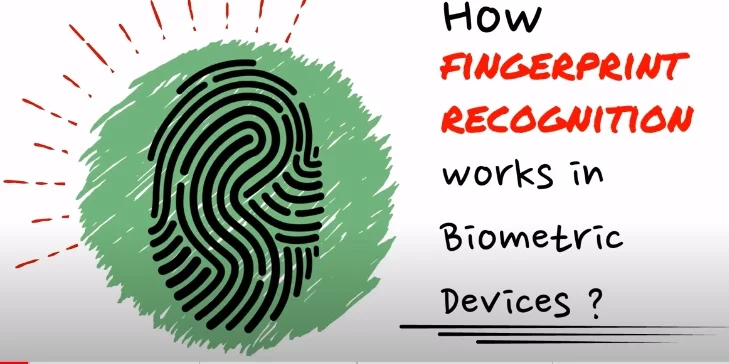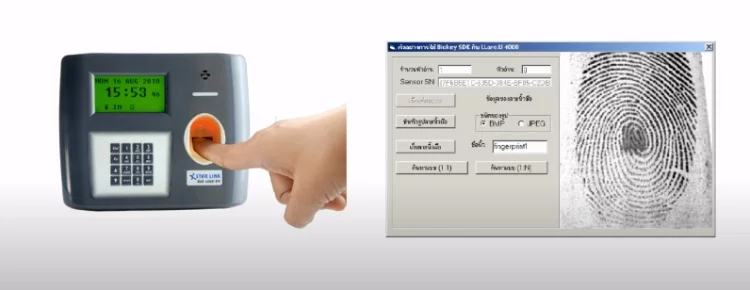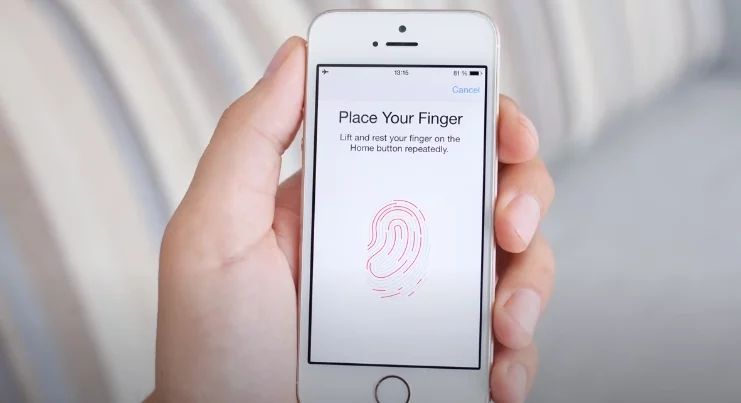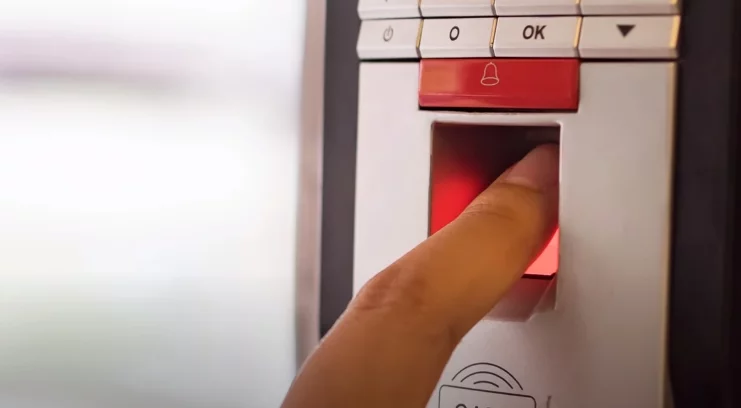How Fingerprint Recognition Works
by Robert Fox
Nothing is really secure. Locks could be picked, lockers can be smashed into, and internet passwords can eventually be known.
Contents
So, how can we safeguard the things we cherish? One method is to employ biometrics, which includes retinal scans, face scans, iris scans, fingerprints, and other complicated personal details. Not long ago, if you had your fingerprints collected, you were probably being investigated for a crime; today, innocent individuals are using fingerprints to defend themselves. Fingerprint scanners may be found on anything from high-security buildings to ATMs and even laptops. Let's explore how they operate in more detail!

A fingerprint scanner is a sort of electronic security device that employs biometric verification using fingerprints to enable a user access to data or to authorize transactions.

Fingerprint scanners were previously only seen in movies and television programs or read in science fiction novels. But those days of human technical skill outstripping imagination are long gone-fingerprint scanners have been with us for decades! Fingerprint scanners are therefore becoming increasingly widespread in the newest mobile gadgets, but they are also making inroads into daily life. What you need to know about fingerprint scanners and how they function is explained below.
What Exactly Are Fingerprint Scanners (also known as Finger Scanners)?

Human fingerprints are essentially unique, that's why they are effective in identifying people. It is not just security agencies that gather and manage fingerprint databases. Many professions that need professional licensure or certification (e.g., financial advisers, real estate agents, contractors, stockbrokers, doctors/nurses, teachers, security, and so on) also demand fingerprinting as a mandatory requirement. When having papers notarized, it is also customary to produce fingerprints.
Because of technological advancements, fingerprint scanners (also known as readers/sensors) are used as an additional (optional) security mechanism for mobile platforms. Fingerprint scanners are the most recent addition to an ever-expanding number of methods to lock and unlock cellphones, which include pin codes, voice recognition, pattern codes, facial recognition, position detection, passcode, iris scanning, and trustworthy Bluetooth/ NFC connections. Why should you use a fingerprint scanner? Most people like it because of its security, simplicity, and futuristic vibe.

Many current IoT applications depend on fingerprint sensors for increased security and protection, as well as user identification. For entrance authentication and data protection, fingerprint sensors are widely used in smartphones and other gadgets, as well as smart industrial and smart devices.

Fingerprint Recognition is already an everyday part of our life; cellphones, tablets, and even laptops all have fingerprint recognition technology as standard. At the workplace, more and more companies are utilizing biometric scanners to check attendance and govern their personnel, in addition to the security advantages they provide by replacing passwords, Identity cards, and door access codes.
It's clear to understand why it's the most established and commonly accessible biometric security system on the market: it's quick, non-invasive, and easy to use.
Fingerprint sensors
Optical sensors and capacitive sensors are the 2 most prevalent fingerprint sensors being used today. This is how they function.
1. Optical scanners
The earliest way of obtaining and verifying fingerprints is using optical fingerprint scanners. This approach, as the name implies, is based on obtaining an optical picture - basically, a photograph. It then employs algorithms to recognize distinct patterns on the surface, like ridges or markings, by evaluating the image's brightest and darkest parts.
Optical sensors, like cellphone cameras, have a limited resolution. The greater the resolution, the better information about your finger the sensor could perceive, boosting the levels of safety. These sensors, on the other hand, produce pictures with far better contrast than a standard camera. To catch this information up close, optical scanners often use a very large number of diodes per inch. Obviously, when your finger is put over the scanner, it is really black. As a result, scanners integrate arrays of LEDs or even your phone's display like a flash to illuminate the image during scanning.

The main disadvantage of optical scanners is that they are easy to deceive. Because the device only captures a 2D image, prosthetics and even high-quality photographs may be utilized to trick this specific design. This sort of scanner isn't safe enough to rely upon your most confidential material on its own. As a result, the industry has progressed toward safer hybrid systems.
Smartphones have uniformly adopted improved capacitive and optical-capacitive hybrid scanners in response to the rising demand for enhanced security. To recognize a genuine finger, these scanners employ optical fingerprint information mixed with capacitive sensing. Because of the decreasing cost of technology, these options are now possible for mid-range items as well.
Relatively small optical modules are making an appearance with the trend toward bezel-less screens. They may be implanted behind the display glass and have a modest footprint. Some versions on the marketplace can effectively work beneath 1mm of glass and with moist fingertips, which causes problems with capacitive substitutes. Hybrid optical scanners will be around for a long time.
2. Capacitance Scanner
The Capacitive scanners, like optical scanners, create a picture of the ridges and valleys that comprise a fingerprint. However, instead of utilizing light to detect the print, the capacitors employ electrical current.
In a basic capacitive scanner, the sensor is composed of one or maybe more semiconductor chips that comprise an array of small cells. Each cell has two conductor plates that are separated by an insulating material.
The sensor is linked to an integrator, which is an electrical circuit based on an inverted operational amplifier. The inverting amplifier is a complicated semiconductor device composed of many capacitors, transistors, and resistors. The mechanics of its functioning would need a complete detail on its own.
An inverting amplifier, just like every other amplifier, modifies one current depending on variations in another current. The inverting amplifier, in particular, modifies a supply voltage. The change is dependent on the relative voltage of two inputs, known as the inverting & non-inverting terminals. The non-inverting terminal is linked to the ground in this scenario, while the inverting terminal is attached to a reference voltage source and a feedback loop. The two conductor plates are part of the feedback loop, which is also linked to the amplifier output.
For scanning the finger, the processor first shuts the reset switch for each cell, shorting the input and output of each amplifier to "balance" the integrator circuit. The capacitors recharge when the switch is turned open again and the processor provides a set charge to the integrator circuit.
The voltage output is read by the scanner processor, which assesses whether it is indicative of a ridge/valley. The CPU can create an overall picture of the fingerprint by analyzing every cell in the sensor array, comparable to the image recorded by an optical scanner.
The key benefit of a capacitive scanner is that it needs a true fingerprint-type form rather than the patterns of light and dark that constitutes a fingerprint's visual imprint. This makes the system more difficult to deceive. Furthermore, since capacitive scanners employ a semiconductor chip instead of a CCD unit, they are more compact than optical systems.
Fingerprint Recognition Has Five Benefits
Security
It is a tremendous advance over passwords and identification cards in terms of security. Fingerprints are far more difficult to forge, and they vary very little over the course of a lifetime, thus the data stays current for much longer than images and passwords.
Simplicity of use
They are straightforward and simple to use for the customer. No more fighting to recall your last passcode or getting locked out because you forgot to bring your picture ID with you. Your fingerprints are with you at all times.
• Non-transferable - because fingerprints are non-transferable, swapping passcode or 'clocking in' in the place of another coworker is not an option. This enables for more precise labor monitoring and adds protection against the theft of critical items.
Responsibility
Employing fingerprint recognition at the workplace also increases transparency. Biometric proof that you were there when a scenario or occurrence happened is difficult to reject and may be used as proof if necessary.
Economical
From the standpoint of technology management, fingerprint recognition has become a cost-effective safety option. Compact hand-held scanners are simple to use and have a high degree of precision.
Fingerprint Recognition's Drawbacks
- System Breakdowns - Scanners, like all other electronic recognition systems, are susceptible to the same technological faults and restrictions, such as power failures, errors, and climatic circumstances.
- Cost - While fingerprint recognition solutions are more cost-efficient than ever, the cost of installation and maintenance may still be a hurdle to deployment for smaller organizations. As technologies become more cost-efficient and cheap, this drawback is diminishing.
- Exclusions - although fingerprints stay generally steady during a person's lifetime, some groups of people will be barred from using the system. Older persons with a history of physical labor, for instance, may struggle to record worn prints into a system, and those who have lost fingers or hands would be rejected.
 |
 |
 |
 |

About Robert Fox
Rob Fox is a former hydro worker who used to teach self defence in Miami for 10 years. He's currently enjoying his retirement, playing cribbage and golf with his buddies, locksmithing and home security in his spare time. Rob is an avid reader, and has even written a few books on the subject of self defence.
Thoughts on "How Fingerprint Recognition Works"
 |
 |
 |
 |
Check These Out
You can Get FREE Gifts. Furthermore, Free Items here. Disable Ad Blocker to receive them all.
Once done, hit anything below
 |
 |
 |
 |